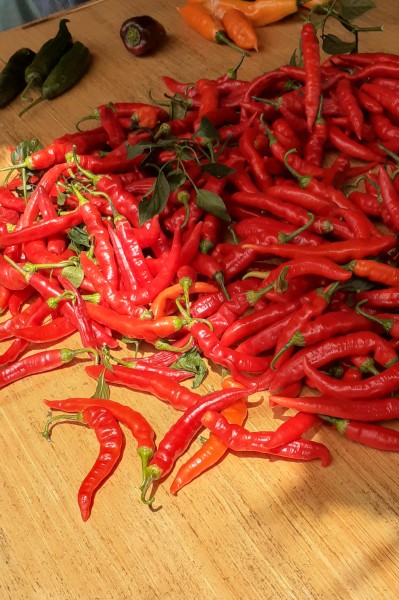Wine & climate change: The wrath of grapes
By Giovanni Cambizaca
This April we celebrate the 50th anniversary of the first Earth Day.  Whether you think our future will be like Greta Thunberg’s nightmares or something more manageable, it is clear that the climate is changing. The closer you are to the planet’s natural rhythms, the more likely you are to recognize these changes, and nobody is closer to this than winemakers.
Whether you think our future will be like Greta Thunberg’s nightmares or something more manageable, it is clear that the climate is changing. The closer you are to the planet’s natural rhythms, the more likely you are to recognize these changes, and nobody is closer to this than winemakers.

Vineyards are particularly sensitive to climate and especially temperature. During the ripening period, grapes undergo important chemical transformations that influence the quality of the wine, but at temperatures above 95 F, these processes are stopped. Even quite small differences in temperature have large effects on wine quality. For example, there is a 15-fold difference in the price of Cabernet Sauvignon grapes that are grown in Napa Valley and Cabernet Sauvignon grapes grown in Fresno. The difference in average temperature between Napa and Fresno is 5 F.
Some areas, that are either already marginal or where temperatures are rising the fastest, will be the first to experience adverse effects. You might remember Ötzi the iceman who was discovered in 1991 when the snow and ice that had covered his body for over 5,000 years melted. He was found in one of the world’s great wine regions, the Alto Adige in the Italian Alps, a place where temperatures are rising about twice as fast as the rest of the world.
The Lageder family has made wine in Alto Adige since 1855, and the current head of the family, Alois, is admired for having led Alto Adige’s evolution from producing jug wine to boasting some of the best whites in Italy. He says, “When I was a kid, the harvest was always after November 1, which was a cardinal date. Nowadays, we start between the 5th and 10th of September and finish in October.” Excess heat also raises the sugar content of the grape, leading to more alcoholic wine, and Lageder says that the character of the wine is already changing.

There are several things that winemakers can do to adapt to the changing conditions. Vines can be replaced with different clones or rootstocks. Vineyards can be relocated to cooler, higher microclimates. Different grapes can be grown. But in Europe, these innovations can fall foul of denomination rules that strictly regulate the territory and type of grapes for a particular style of wine. So these rules will have to change. In Bordeaux, it has already been recognized that new types of grapes will have to be allowed, and new rules have been introduced to permit the use of several grapes more normally associated with the Iberian peninsula.
But while there will be losers from climate change, there will also be winners. Champagne, with its dependence on the cool weather grapes of Pinot Noir and Chardonnay, may be under threat in France, but these same grapes are thriving on the chalk downs of Sussex and Hampshire in England, in soils that are geologically identical to the most prized terroirs of the French region. To be sure, the wines produced here have their own character, with spirited acidity and an orchard-fruit freshness, but when everything is balanced, they can be delightful. They may not be Champagne, but they might be the future of Champagne.
Even Scandinavia now boasts a fledgling wine industry. The growth has been rapid: Denmark now boasts 90 commercial vineyards, up from just two 15 years ago, and around 40 have sprung up in Sweden. Nearly a dozen vineyards are operating as far north as Norway.
It’s very early days for these northern ventures, but I think it’s fair to say we will be seeing more of these wines in the future. Bordeaux, and Champagne, will still be around, but it probably won’t be like your father’s Bordeaux. Overall, it’s going to be an exciting time for wine aficionados, but let’s not forget the price the planet is paying for these changes to be possible.
Jacqueline Mackenzie wrote to me from Vilcabamba, where she and her husband Don are living a sustainable and almost self-sufficient life. When not tending their garden, Jacqueline is busy baking bread or making salads with homemade dressings. This year, they had a bumper crop of chilis that are fermenting now to make chili sauce.
For the recipe this week, I think we all deserve a treat, so here’s a very easy recipe for an apple pudding. You could serve this topped with some vanilla ice cream.
Virginia Apple Pudding
Prep 10 m, cook 30 m
1/2 cup butter, melted
1 cup white sugar
1 cup all-purpose flour
2 teaspoons baking powder
1/4 teaspoon salt
1 cup milk
2 cups peeled, chopped apple
1 teaspoon ground cinnamon
Directions
Preheat oven to 190 C. In a small baking dish, combine butter, sugar, flour, baking powder, salt, and milk until smooth. In a microwave-safe bowl, combine apples and cinnamon. Microwave until apples are soft, two to five minutes. Mix apples into the batter and bake in the preheated oven for 30 minutes, or until golden.
We have now been in lockdown for whatever days, and if you are doing this alone, I think it must be especially challenging, but you’re not the first person to live a solitary existence. Alexander Selkirk was a Scottish buccaneer who made his living raiding Spanish ships in the Caribbean and South America.
In September 1704 his ship visited the uninhabited Juan Fernández islands, some 400 miles off the coast of Chile. Selkirk argued with the captain that the ship needed repairs before sailing any further, and the captain responded by abandoning Selkirk on the island. Fortunately, the island had good fresh water and adequate food supplies – spiny lobsters, feral goats, and wild turnips.
Selkirk survived until February 1709, when the pirate ships Duke and Duchess made landfall on the island. After over four years without human company, Selkirk was almost incoherent with joy, but the captain of the Duke was impressed by the peace of mind he had acquired during his ordeal, “One may see that solitude and retirement from the world is not such an insufferable state of life as most men imagine, especially when people are fairly called or thrown into it unavoidably, as this man was.” Selkirk quickly reacquainted himself with his former life, and on his way back to England he visited Guayaquil where he led a boat up the Guayas River in pursuit of some wealthy Spanish ladies. Selkirk arrived back in England in October 1711, and his story inspired Daniel Defoe to write Robinson Crusoe.
Te enviamos un abrazo,
Giovanni, Maria Eliza y toda la famiia
Le Petit Jardin


















